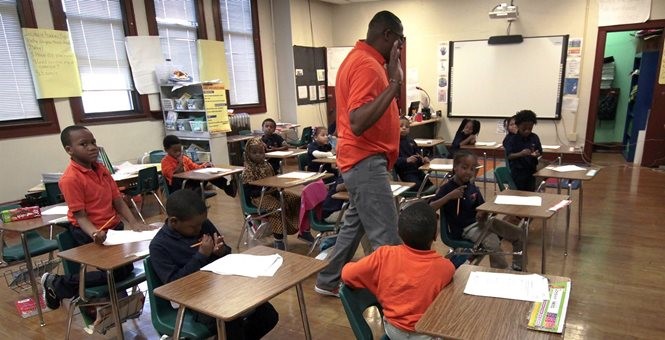WSJ October 19, 2019
Florida’s Reform Momentum
By The Editorial Board | 572 words
For policy consequences, the most important election in 2018 might have been Florida’s contest for Governor. Now we’re seeing the results, as Republican Ron DeSantis expands school vouchers and has already remade the state Supreme Court.
With little fanfare this autumn, another 18,000 young Floridians joined the ranks of Americans who enjoy school choice. More than 100,000 students, all from families of modest means, already attend private schools using the state’s main tax-credit scholarship.
But the wait list this spring ran to the thousands, so in May the state created a voucher program to clear the backlog. Last week Mr. DeSantis said the vouchers have hit their initial cap of 18,000 students, but the law includes an automatic escalator. Starting in 2020-2021, the cap can rise each year by 0.25% of Florida’s total public-school enrollment. That figure, at last count, was roughly 2.8 million, meaning perhaps another 7,000 vouchers annually.
This is a huge victory for school choice. The first cohort of voucher recipients is 71% black and Hispanic, according to state data. Eighty-seven percent have household incomes at or below 185% of the poverty line, or $47,638 for a family of four. The law gives priority to these students, although eligibility reaches to 300% of poverty, or $77,250 for a family of four. Also notable: These are vouchers funded directly by state money, which is a challenge to Florida legal precedent.
In 2006 the state Supreme Court struck down then-Governor Jeb Bush’s voucher law, which specifically aimed to get students out of bad schools. A 5-2 majority said the plan ran afoul of the Florida Constitution’s guarantee of “uniform” public education. Tax-credit scholarships are a legal work-around: Companies donate to a private nonprofit scholarship fund, and then the state gives them a tax credit.
There’s no data yet for the first vouchers, but 80% of tax-credit students choose to attend religious schools. Voucher opponents say state money shouldn’t go to parochial education. “It’s a plainly unconstitutional program,” one secularist said this spring. Florida, like other states, has a Blaine Amendment in its Constitution, which bars public spending “in aid of any church, sect, or religious denomination or in aid of any sectarian institution.”
Curiously, no big court challenge to the vouchers has appeared. Maybe the teachers unions are biding their time. Then again, maybe the hesitation is related to Mr. DeSantis’s appointment this year of three new conservative jurists to the state’s high court. There is now a 6-1 conservative majority, which might show more sympathy for religious liberty.
As it happens, the U.S. Supreme Court this term will hear a challenge to Montana’s Blaine Amendment. The ruling could take away the Blaine justification, which was born out of anti-Catholic bias in the 19th century, for striking down Florida’s vouchers. Meantime, the program will get harder to kill politically as more families sign up and see the benefits.
This was already evident in the 2018 gubernatorial election. Mr. DeSantis’s opponent, Democrat Andrew Gillum, said he would wind down the scholarships. CNN’s exit poll says 18% of black women voted for Mr. DeSantis, as William Mattox of the James Madison Institute noted last year in these pages. That’s decisive, since the Governor won by fewer than 40,000 ballots. School choice boosted Mr. DeSantis into office, and now he is delivering for 18,000 more Florida families. Add another 7,000 next year, and then another 7,000, and . . .

